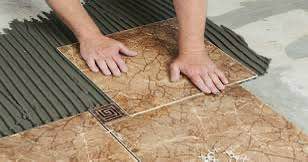Body (Biscuit) Defects
One of the most important stages in production is forming the tile’s body or “biscuit.” Any flaw here can lead to serious issues later.
• Cracks: These may appear during drying or firing, usually caused by thermal stress or excessive moisture. While surface cracks may be hidden by glazing, deep cracks reduce the tile’s strength and durability.
• Warping or Bending: Uneven heating or cooling during firing may cause warping, especially in large-format tiles, making installation difficult. Large-format porcelain wall tiles must be completely warp-free.
• Size Variation (Caliber): Tiles produced in slightly different sizes lead to uneven grout lines. Precision manufacturing minimizes this problem.
• Air Bubbles and Voids: Occur when raw materials aren’t compacted enough or due to improper firing, weakening the tile and increasing water absorption.
• Stains and Contamination: Foreign particles, like iron or carbon, can enter raw materials and appear as unwanted stains after firing.
Glaze and Surface Defects
After firing the body, glazing and surface finishing ensure the tile’s aesthetics and durability.
• Pinhole: Tiny holes on the glaze surface caused by gas release during firing.
• Crazing: Fine cracks in the glaze due to thermal expansion mismatch between the body and glaze.
• Blistering: Raised spots on the glaze surface caused by trapped gases.
• Color Variation: Minor or major color changes may result from improper firing, impurities in the glaze, or incorrect kiln temperature control.
• Glaze Running: Uneven glaze flow due to improper viscosity or firing temperature, leading to streaks or uneven coverage.
• Crater: Holes on the glaze surface, possibly due to foreign particles or air bubbles.
• Abrasion: Low-quality ceramics with poor wear resistance may scratch easily, reducing aesthetic appeal.
• Waviness: Uneven glaze application or process issues can cause undulations on the surface, affecting light reflection.
Terraceram Solutions
At Terraceram, we use modern production lines and precise quality control to minimize defects during manufacturing. Durable and high-quality ceramics are the result of this attention to detail. By choosing Terraceram products, you can be confident in the quality, aesthetics, and longevity of your projects




